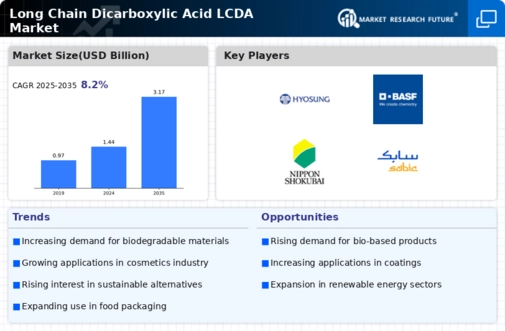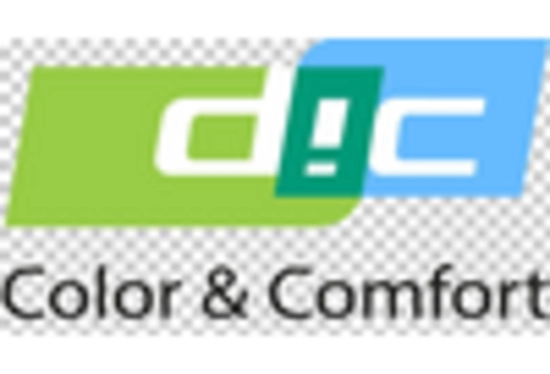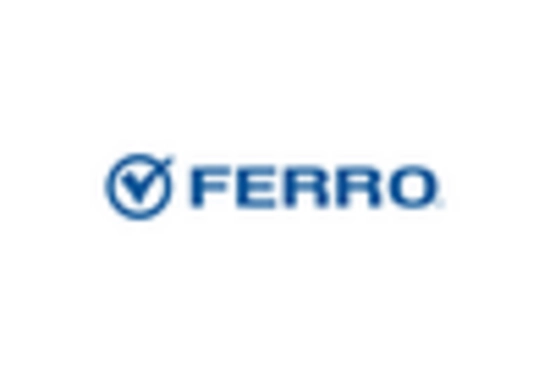Growth in End-Use Industries
The Long Chain Dicarboxylic Acid LCDA Market is experiencing growth driven by the expansion of end-use industries such as automotive, construction, and personal care. These sectors are increasingly incorporating long chain dicarboxylic acids into their products due to their superior performance characteristics. For instance, in the automotive industry, LCDA-based materials are utilized for lightweight components that enhance fuel efficiency. Market forecasts suggest that the demand from these end-use industries will continue to rise, contributing to a compound annual growth rate of around 4% for the Long Chain Dicarboxylic Acid LCDA Market over the next few years.
Rising Demand for Biodegradable Products
The Long Chain Dicarboxylic Acid LCDA Market is experiencing a notable increase in demand for biodegradable products. As consumers become more environmentally conscious, manufacturers are seeking sustainable alternatives to traditional petrochemical-based materials. Long chain dicarboxylic acids, known for their biodegradable properties, are increasingly utilized in the production of eco-friendly polymers and surfactants. This shift towards sustainability is reflected in market data, indicating a projected growth rate of approximately 5% annually in the LCDA sector. Companies are investing in research and development to enhance the performance of these biodegradable products, thereby driving the Long Chain Dicarboxylic Acid LCDA Market forward.
Expanding Applications in Coatings and Adhesives
The Long Chain Dicarboxylic Acid LCDA Market is witnessing an expansion in applications, particularly in coatings and adhesives. The unique chemical properties of long chain dicarboxylic acids make them suitable for formulating high-performance coatings that offer durability and resistance to environmental factors. Market analysis suggests that the coatings segment is expected to account for a significant share of the LCDA market, driven by the construction and automotive industries. The increasing need for advanced adhesive solutions in various sectors further propels the demand for long chain dicarboxylic acids, indicating a robust growth trajectory for the Long Chain Dicarboxylic Acid LCDA Market.
Technological Innovations in Production Processes
Technological innovations are playing a crucial role in shaping the Long Chain Dicarboxylic Acid LCDA Market. Advances in production processes, such as biotechnological methods and catalytic synthesis, are enhancing the efficiency and cost-effectiveness of LCDA manufacturing. These innovations not only reduce production costs but also minimize environmental impact, aligning with the growing emphasis on sustainability. Market data indicates that companies adopting these advanced technologies are likely to gain a competitive edge, as they can offer high-quality products at lower prices. This trend is expected to drive the Long Chain Dicarboxylic Acid LCDA Market towards greater profitability and market share.
Increasing Regulatory Support for Sustainable Chemicals
The Long Chain Dicarboxylic Acid LCDA Market is benefiting from increasing regulatory support aimed at promoting sustainable chemicals. Governments are implementing policies that encourage the use of environmentally friendly materials, which is fostering a favorable environment for the adoption of long chain dicarboxylic acids. This regulatory landscape is likely to enhance market growth, as manufacturers align their product offerings with these sustainability goals. Furthermore, compliance with stringent regulations can lead to enhanced brand reputation and consumer trust, thereby driving demand within the Long Chain Dicarboxylic Acid LCDA Market.

















Leave a Comment